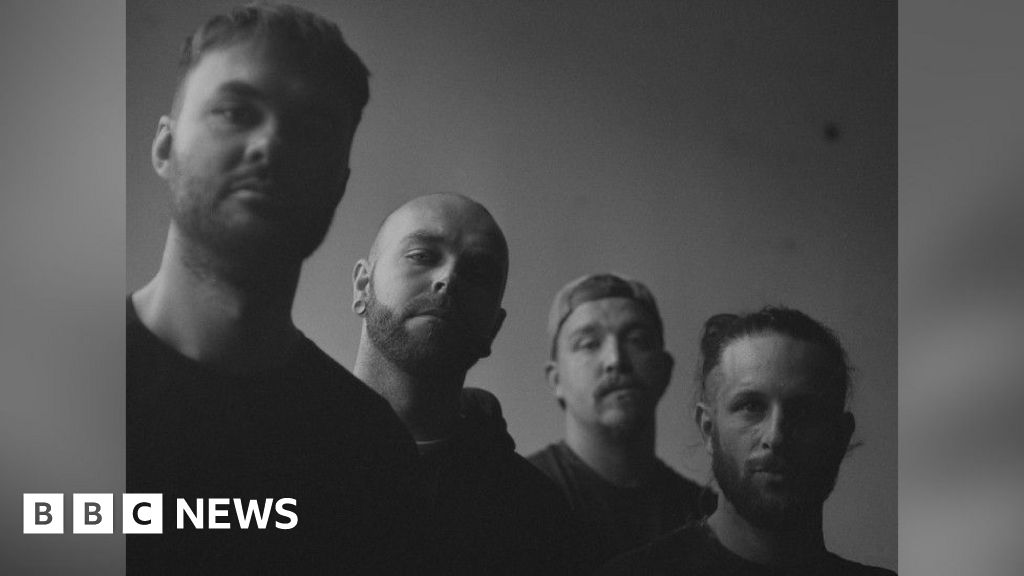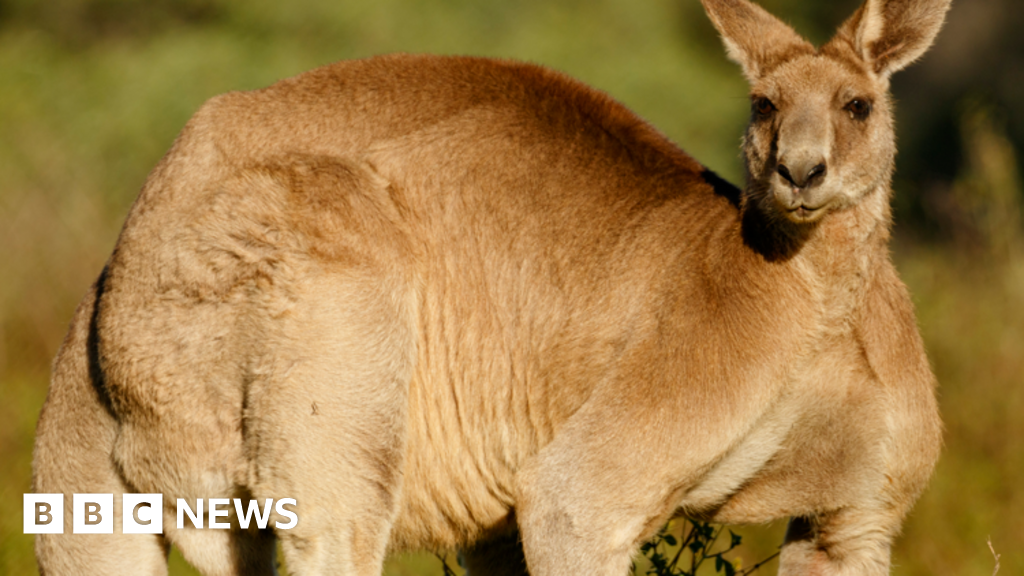- Baseball
Calm returns to Qatar following Iran’s attack on Al Udeid airbase
时间:2010-12-5 17:23:32 作者:Management 来源:Australia 查看: 评论:0内容摘要:A helicopter evacuates a car from the village of Blatten, Switzerland, Thursday, May 29, 2025, one day after a massive debris avalanche, triggered by the collapse of the Birch Glacier, swept down to the valley floor and demolished large parts of the village. (Jean-Christophe Bott/Keystone via AP)A helicopter evacuates a car from the village of Blatten, Switzerland, Thursday, May 29, 2025, one day after a massive debris avalanche, triggered by the collapse of the Birch Glacier, swept down to the valley floor and demolished large parts of the village. (Jean-Christophe Bott/Keystone via AP)
, as cases climb not only here butand Canada. In Mexico, cases have been concentrated in the

— long skeptical of vaccines and— in the northern border state of Chihuahua.Officials say results of their campaign alongside Mennonite leaders have been mixed — they cite tens of thousands of new vaccinations in Chihuahua, but infections have ballooned and spread past the community to Indigenous and other populations.

Mexico is battling its worst measles outbreak in decades, with cases surging in the northern border state of Chihuahua, home to a large Mennonite community wary of vaccines. As infections rise across North America, officials say misinformation and deep-seated distrust of authorities are fueling the crisis. (AP Video: Martín Silva Rey)Federal officials have documented 922 cases and one death in Chihuahua. Officials, health workers and local leaders say the numbers are likely underestimated, and misinformation about vaccines and endemic distrust of authorities are their biggest obstacles.

Pressed against the fringes of the small northern city of Cuauhtemoc, the Mennonite settlement here spans about 40 kilometers (25 miles). With 23,000 residents, it’s one of Cuauhtemoc’s primary economic engines, but it’s an isolated place where families keep to themselves. Some have turned to social media and anti-vaccine websites for research. Others use little technology but visit family in the United States, where they also hear misinformation — which then spreads through word of mouth.
Chihuahua is a particularly worrisome place, officials say — as a border state, the risk that the preventable disease will continue spreading internationally and affect the most vulnerable is high.Researchers feel pressure to show if pig organs can keep people alive much longer than a few months, said eGenesis’ Curtis. If not, the question will be “do we have the right gene edits?”
The balance is choosing participants sick enough to qualify but not so sick they have no chance.“There’s a tremendous number of patients who would be very willing, very willing to do this,” said Dr. Silke Niederhaus of the University of Maryland, who isn’t involved in xenotransplant research but watches it closely.
Niederhaus became a kidney transplant surgeon because around her 12th birthday, one saved her life. That kidney lasted three decades. When it failed, it took five years to find another. So she understands the draw of pig research, and urges people to learn their odds of getting a human kidney before volunteering.If they’re younger, healthier or have a living donor, “I would probably say go with what’s known and what’s proven,” Niederhaus said. But if they’re older and dialysis is starting to fail, “maybe it’s worth taking the risk.”
- 最近更新
- 2025-07-07 03:18:10NASA astronauts step outside space station to perform the 5th all-female spacewalk
- 2025-07-07 03:18:10Schwarzenegger tells environmentalists to 'stop whining' and get to work
- 2025-07-07 03:18:10Organic Rancher ground beef sold at Whole Foods may be tainted with E. coli
- 2025-07-07 03:18:10A video of Ukrainian POWs killed by men identified as Russians raises questions on accountability
- 2025-07-07 03:18:10In Mali, USAID funding cuts hit a local language learning program that empowered thousands
- 2025-07-07 03:18:10Music Review: Cautious Clay's dreamy R&B-pop 'The Hours: Morning' is an exploration in time
- 2025-07-07 03:18:10México elige a un abogado indígena para la Suprema Corte, un símbolo rodeado de controversia
- 2025-07-07 03:18:10US military shifts messaging in Africa, telling allies to prepare to stand more on their own
- 热门排行
- 2025-07-07 03:18:10No-Touch Accurate Forehead Digital Thermometer
- 2025-07-07 03:18:10Jury deliberations near in Harvey Weinstein sex crimes retrial
- 2025-07-07 03:18:102026 COLA Prediction Update - May
- 2025-07-07 03:18:10Oficialismo también se hace con el Tribunal de Disciplina de México, el de control a los jueces
- 2025-07-07 03:18:10Nathan Ambrosioni Finds Sympathy for ‘Bad Mothers’ in Camille Cottin Starrer ‘Out of …
- 2025-07-07 03:18:10CPI: Inflation fell last month, a sign prices cooled before tariffs
- 2025-07-07 03:18:10Joanna Gaines’s Apple Baked Beans
- 2025-07-07 03:18:10Jessie J says she's been diagnosed with breast cancer
- 友情链接
- Cute and flattering not-too-short shorts that will keep you cool all summer long Early-season heat dome brings highest temperatures in years to parts of Eastern U.S The best hair growth products for women, according to hair loss experts AOLSave up to 50% on pillows from Coop, Lincove, and Tempur-Pedic during early Prime Day sales Trump’s budget demands, Iran to split NATO summit focus Walmart just announced its biggest sale of the summer: These 25 deals are already live What’s with Iran’s Death to America chant? Trump ‘very unhappy’ with Israel over violating ceasefire with Iran A disgusting heat wave is coming — Here are 20 cooling fans on sale at Amazon U.S. Supreme Court allows -- for now -- third-country deportations The best hair growth vitamins and supplements, according to experts Iran attacks US military base in Qatar Early-season heat dome brings highest temperatures in years to parts of Eastern U.S As visitors flock to parks, deep cuts leave rangers and wildlife at risk Calm returns to Qatar following Iran’s attack on Al Udeid airbase AOLWorried about tariffs? Here’s what prices are rising — and what’s still safe to buy Elle DecorThe coolest trend in design? Going back in time Early-season heat dome brings highest temperatures in years to parts of Eastern U.S The best at-home Botox alternatives, according to dermatologists Central Park hits temp record last seen on this date in 1888 as heat wave hits easter… InStyle3 days ago7 Radiant Colors That Go With Any Red OutfitThese combos are a surefire hit The 11 best hot sauces of 2025, according to chefs shampoo for thinning hair in beauty Qatar says it has ‘right to respond’ to Iranian missile attack The best at-home Botox alternatives, according to dermatologists Explosions seen in sky over Doha, Qatar Martha Stewart LivingHow to deep clean a ceiling fan (without making a mess) The 11 best hot sauces of 2025, according to chefs Firefighters battle a wildfire burning out of control on the Greek island of Chios The best hair growth products of 2025, according to hair loss experts
